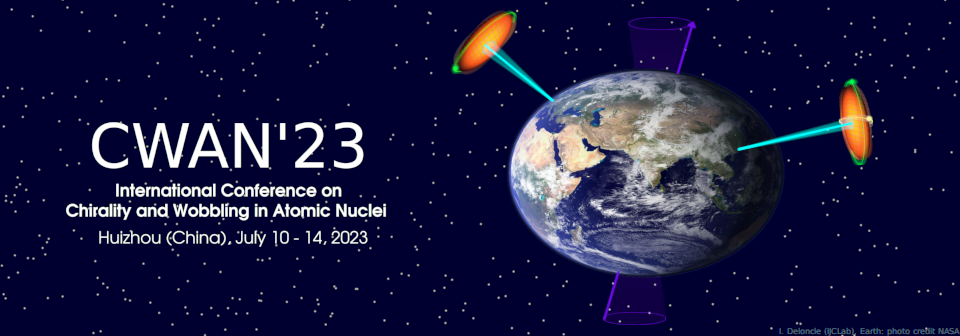Orateur
Description
Nuclei with triaxial shape can rotate around their three axes, which produces a number of excited rotational bands for each single-particle configuration. This three-dimensional rotation can be visualised in the angular moment space, it represents a precession of the total angular momentum along an axis, and looks like the precession of a rotating top. In even-even nuclei the precession gives rise to the ground-state and the γ bands. In odd-mass nuclei the rotation is coupled to the angular momentum of the valence nucleon producing a precession of the total angular momentum, and giving rise to an yrast and a number of excited rotational bands with the same nucleon configuration.
The nature of the predicted rotational bands in odd-mass triaxial nuclei with πh$_{11/2}$ configurations using the quasiparticle-plus-triaxial rotor model will be discussed. Limits with free and frozen single-particle alignment will be considered to evaluate the impact of the single-particle degree of freedom. The rotational nature of the excited bands produced within frozen single-particle alignment will be highlighted. The difference in the features of such excited rotational bands and those produced by a vibrational excitation (e.g. a wobbling phonon) will be evaluated and linked to the features of excited rotational bands in even-even triaxial nuclei. The discussion will be extended to odd-odd triaxial nuclei with πh$_{11/2}$$\otimes$h$_{11/2}$ chiral configuration and the striking similarity in the excitation energy patterns of partner bands with πh11/2$\otimes$h11/2 and with πh$_{11/2}$ nature will be discussed.

